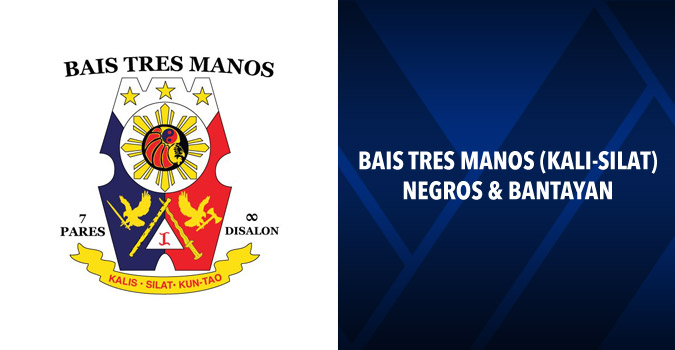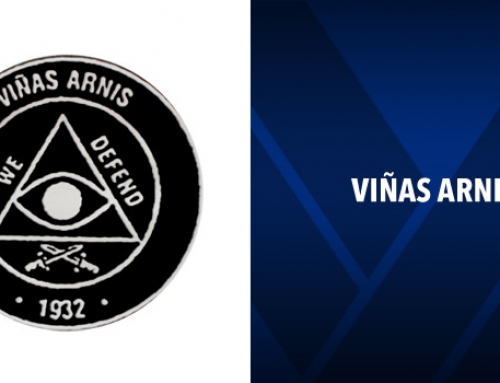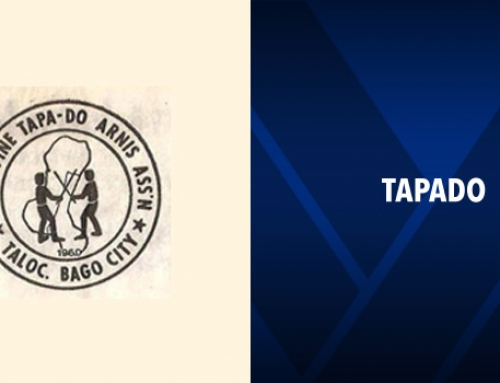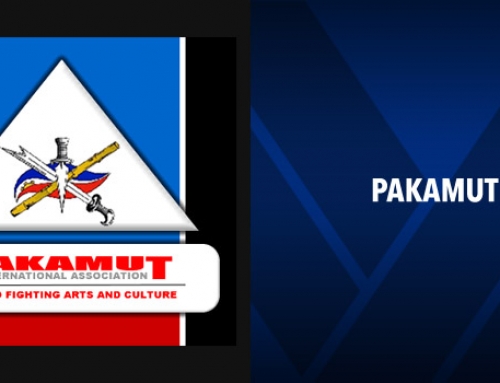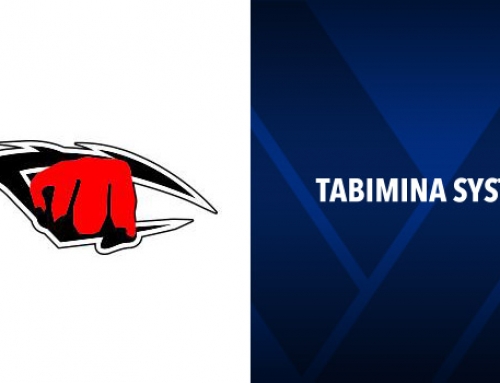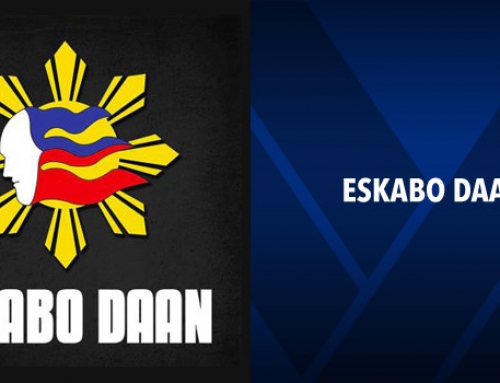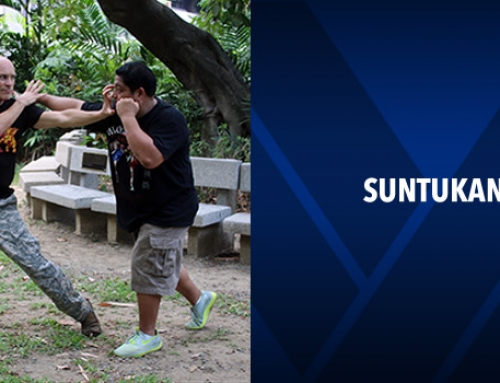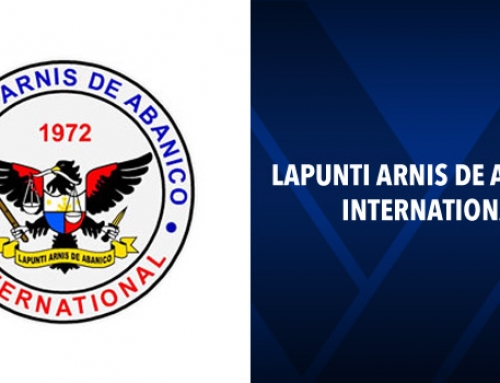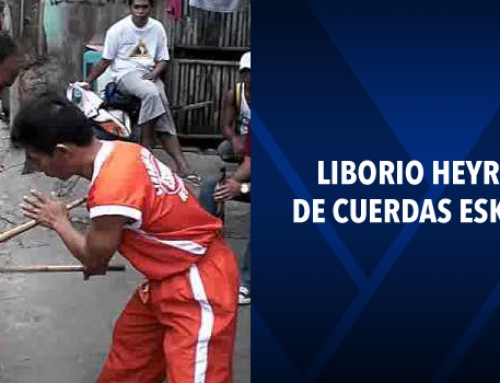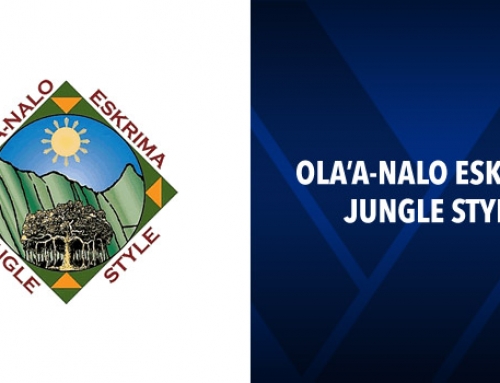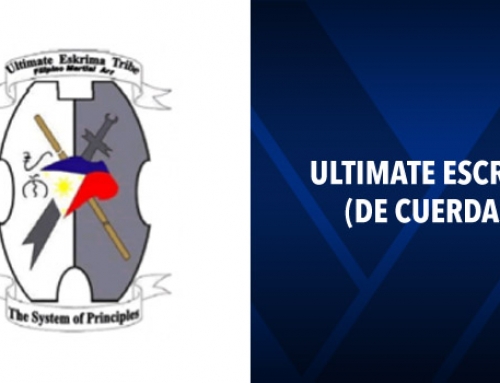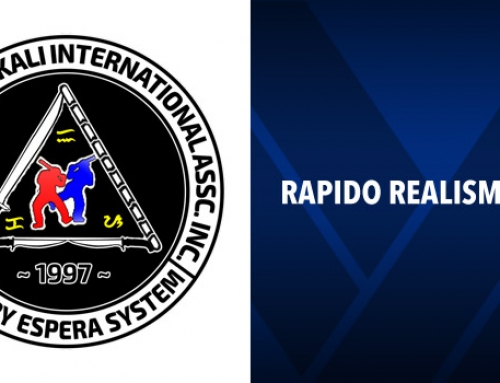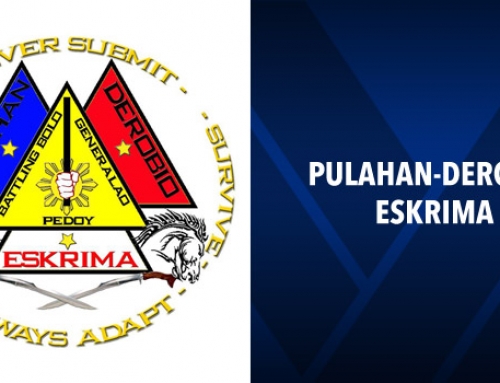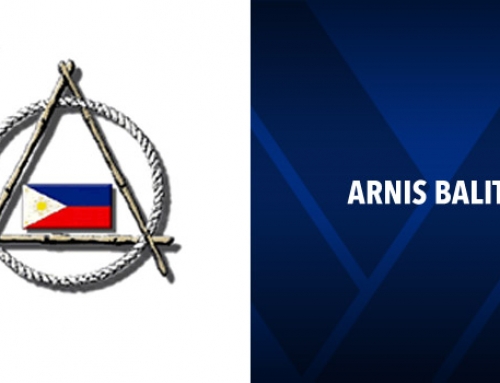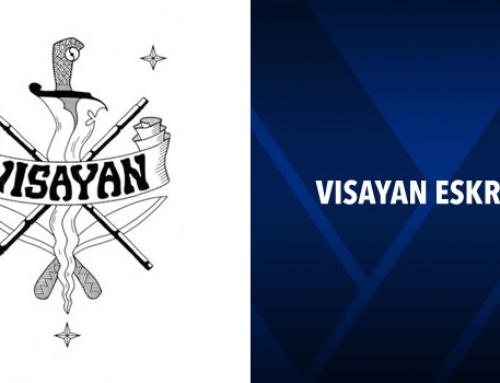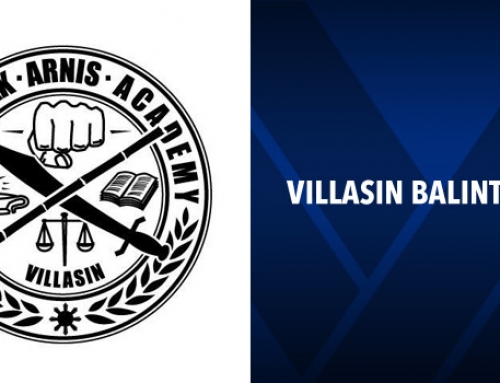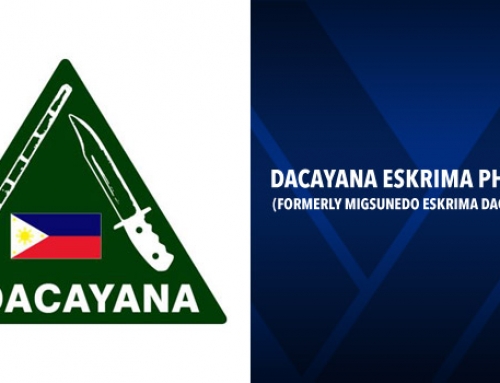Philosophy and Principles of Bais Tres Manos
KALIS-SILAT is a treasured knowledge of Filipino martial artists, cultivated from a number of years in training and discipline. During the early civilization these types of Martial Arts were developed by practitioners for survival, defense and protection of their families and territorial land against intruders.
The Bais family adopted the three principle martial arts objectives of native Filipinos. The family also improved and developed unique self-defense movements that are applicable in sport martial arts and actual combat. They were designed for application by either gender. The objectives are to promote camaraderie, health and personal self defense which have to be applied only in unavoidable circumstances.
The first training starts with bladed and non-bladed weaponry. Continued practice develops the body instinct’s and raises awareness of the true danger of weaponry. The concept of this training is to attack in a simultaneous manner, neutralizing the opponent and controlling the fight. Continuous follow up (strike) on every tactical strike is a must.
The end of every strike should be the beginning of the next one. This will redirect your opponent’s counter moves and let you control the fight. Blocking is essential for effective counter-options. Balance is a factor of technique. Foot work is the stable structure of defense and offense.
The second principle is the use of hand and foot fighting for offensive and defensive techniques to out-maneuver the opponent. Understanding the importance of balance, the ranges of target and foot work are vital on every attacking and countering aspect. The effectiveness of hand and foot as a weapon is the base form of each distance.
Leg kicks are used for long range distance and mobility of jumping. Sliding and body shifting are additional factors on distance maneuvers. Circular punching, straight punches, back hand and chopping are for medium range. The elbow, knee kicks and upper cut punches are for short ranges. The main key is to understand how your own body functions in every position. Then reach beyond as your body adopts and applies these techniques.
The third principle is the continued practice and preservation of the “dancing ways” of patterned drills and forms which Filipinos called “Sayaw ” (a dance). These practices are armed and unarmed and performed in non-aggressive body movements.
This is dedicatedly performed for the development and preservation of the arts and for training the body. This principle teaches your physical being and mind to react instantly according to the situation of the attack, if engage in real fighting.
Bais Adaptability and Application
Practice, adaptability and application are vital to the Bais system.
- The body must adopt instinct movements to react offensively and defensively. The arms and legs are the weapons and armor of your body. Anything you hold serves as the extended weapons. The hand holding a weapon is considered a live hand. Your empty hand serves as your sacrifice hand and second weapon. If necessary this will protect your eyes, the vital targets of your body and your live hand.
- Blocking in a circular motion is one of the most effective defense techniques before your counter attack. Learn the (8) optional angles of your defensive forces to combine with your blocks.
- Remember that a person, who cannot see, cannot fight. Attack the eyes of the opponent first. Consider that the fighting hand of your opponent, holding a weapon, is a Cobra. Apply the second hit at the weapon hand of your opponent. The third is to hit the structural joints of your opponents. Joints don’t build muscle to absorb the pain from a powerful strike. The most effective defense, to preserve and protect your life, is to avoid fighting. If it cannot be avoided, fight with honor for a justified reason. Develop the survival principles: that defeating the opponent is not a crime, dying in the hand of an opponent is not an option; your objective is not to be a criminal or a victim.
- Through training, practitioners become aware that fighting causes problems and your fighting skills should only be used for defense. Learn the key factors of Discipline, Self Control and Kindness to prevent possible problems.
- Never plan strategy techniques during a fight. Instead develop the techniques before a possible fight. One of the key factors is to practice and teach the body to respond instinctively and apply a defense based on the method of attack.
- The force of each strike is at the end point of the weapon. Learn your distance so that attacking strikes and counters will be more effective. Remember that this process is the same with your attacker.
- Part of fighting knowledge is to know your distance. The eye measures and focuses the target and signals to the brain, instantly the brain commands the body and the muscles to react and respond for an attack.
- The forces of a strike rely on the speed to create a power. To execute a speed strike you must hold your weapon firmly, yet relaxed and secure. Strike softly with speed to hit the target hard. As my father said, Strike softly in speed but hit like a thunder.
- The best counter defense is to be away from the moving attack. Remember swimming against the current is difficult. Maintain a calm mind and direct the opponent’s force away from you by breaking the balance to create momentum for your counter. Never pause after a strike within the reach of an opponents range. Maneuver away and avoid meeting the possible follow up of the opponent. To counter, hit with speed and force to demoralize your opponent.
- Never turn your body away from a verbal confrontation. This will allow a surprise attack. Maintain eye focus on the hands and feet of the opponent and secure your distance and surroundings before turning your back.
- Do not prolong a fight. Instead apply techniques to control, break and the last course is to eliminate to survive. Cinematic moves are not applicable in survival fights. The majestic skills and techniques in sport competitions and arts help to develop the continued evolution of martial arts.
- Never draw your weapon if you don’t intend to use it. Your action will provoke your opponent and he/she will bring stronger forces against you. Use your weapons in justifiable causes with adherence to the law of survival and self defense.
- Never conceal a blade unlawfully or with criminal intent. A bladed weapon is a tool to help you survive an unlawful attack and should be treated as such. Using the bladed weapon to attack is not considered self defense. It is illegal if it cannot be proven to be the last course of action for preservation of life in self defense.
- Build a foundation of your martial arts knowledge from balance, focus and training to achieve perfection of equal forces based on human behavior and acts of natures. The only secret in the Bais system of fighting is to practice and develop your body so that your techniques become a natural instinct.
- Never underestimate your opponent. Build courage within you to defeat your opponent with respect. Remember that non-martial artists are just as dangerous as experts.
- Maintain a calm mind during a fight, breathe from the abdomen and move your body in rotating motions from the waistline. Use your legs and arm joints to deliver the momentum force at the end of the strikes and blocks.
The Bais’ motto in fighting is No Retreat. (Walay Atras) My Grandfather explained that: “We don’t want to be a criminal nor a victim.” Use the Bais System for defense, to safeguard your life in a righteous way to preserve honor, respect and dignity.
The Balance of the Forces is the Development of Mind, Body and Spirit
These theories are from the inborn ability of mankind as natural fighters for survival even without formal fighting training. It is known that Filipinos have a lot of patience and tolerance to hold threats and manage stress for long periods of time due to their ritual SPIRITUAL faith which is believed to maintain harmony. They teach their BODY to withstand pain and the MIND to respond according to environmental causes.
They have to react defensively to protect and attack for reasonable causes. The aggressiveness of Filipinos was devised from their defensive attitudes to safeguard themselves, love ones and friends. They are willing to die for honor but it is not in their nature to conquer.
Sources of Energy in Training
In other parts of Asia, the important energy aspect in their training is the IN and YO (Japan) and for the Chinese it is the YIN and YANG. For the Bais system it is the “I” pronounced as (KA) standing for SOFT and HARD coming from the central energy, the CHI or KI and U-TONG for Filipinos. For example: Kuntaw Ng Pilipinas, founded by Great Grand Master Carlito A. Lanada Sr.: the energy symbols “W and M” stands for SOFT and HARD.
The Bais Interpretation of this Theory
Filipinos have developed this strong energy from the same sources called U-TONG (Chi or Ki) internally rooted and stored three inches below the navel. It is used to balance the positive and negative forces that have been applied in their physical, mental and spiritual training. This involves controlling the breathing patterns and focusing the mind through concentration.
Utilizing the breathing from the U-tong section creates phenomenal inner strength that becomes a force of power. With this process it creates blood flow from the heart to the brain and other internal parts of the body. This causes internal exercise and promotes strength, health and a younger appearance. These are the benefits of practicing Martial Arts.
The “I” and the solid powerful triangle frame represent the IN and YO or the YIN and Yang, for Filipinos. Other meanings; the “I” stands for “KA” in the old Filipino alphabet (known as Alibata). The “I” is a definite shape of a positive energy source and the solid triangle framed surrounding the “I” represents the negative energy forces.
The Triangle is one of the strongest geometrical structures of energy for strength. Also the “I” inside the triangle symbolizes the solidarity and union of Filipinos in defensive and offensive acts. This serves as the positive and negative power, combined together, being the elements of energy or forces.
During the revolutionary time (‘I’) “KA” was (Kapatiran) meaning Brotherhood. It also stands for (Kaakibat) an Alliance member in self defense protecting the native land. It is believed that the concept of the triangle is a significant pattern of Filipino training to develop a systematic striking, and defensive tactics.
Other Filipinos believe in the power of prayer (known as Oracion) the “I” inside the triangle stand for power in their fighting, as the divine symbol of the protector like (Anting-Anting) or amulet. This is the reason why the triangle is on the symbol of most systems of Filipino Martial Arts.
Grand Maestro Jon Bais adapted and applied the philosophies of His Supreme Grand Master Carlito A. Lanada Sr. and the Bais Tres Manos which he introduces in all of his teaching for the benefit of his students of both KUNTAW and KALIS-SILAT students.
Kuntaw Philosophy
- Don’t Criticize (Huwag Mag-Pupuna)
- Don’t be conceited (Huwag Maging Mayabang)
- Be Patient (Maging Mahinahon)
- Be Kind (Maging Mabait)
- Be Understanding (Maging Maunawain)
- Eliminate Your Temper (Iwasan Maging Mainisin)
This is the Philosophy of Kuntaw Supreme Grand Master Carlito A. Lanada Sr. for his students. Kyud Jon Bais, Rank- 7th Degree Red & White Belt in Kuntaw (Ranking Master).
Bais Tres Manos Philosophy
This Philosophy is also defined in the salutation prayer of Bais (Oracion)
- PEACE – Promote and seek love, understanding and peace among others for joy and unity.
- HUMBLE – Be simple and humble with what you have and share it with the weak.
- RESPECT – Respect others to gain respect for yourself and build dignity.
- KNOWLEDGE – Cherish your ability and teach the legacy of knowledge so that others will benefit.
- ENERGY – Use your Divine Energy to understand right from wrong and maintain a healthy life.
- HARMONY – Be an instrument of good faith to others for spiritual energy and wisdom.

